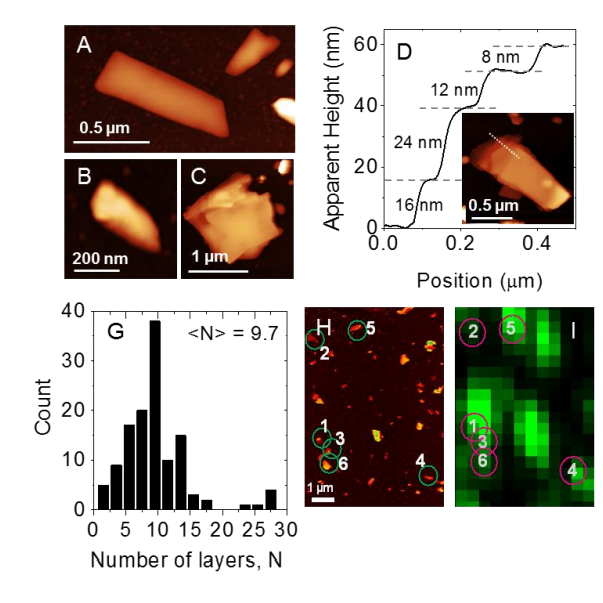Better than Graphene - What a fast changing field of technology!
https://www.technologyreview.com/view/534166/black-phosphorus-the-birth-of-a-new-wonder-material/
January 12, 2015
Black Phosphorus: The Birth of a New Wonder Material
Materials scientists have discovered how to make black phosphorus nanosheets in large amounts, heralding a new era of nanoelectronic devices.
image: https://www.technologyreview.com/sites/default/files/images/Black%20phosphorous.png

In the last few years, two-dimensional crystals have emerged as some of the most exciting new materials to play with. Consequently, materials scientists have been falling over themselves to discover the extraordinary properties of graphene, boron nitride, molybdenum disulphide, and so on.
A late-comer to this group is black phosphorus, in which phosphorus atoms join together to form a two-dimensional puckered sheet. Last year, researchers built a field-effect transistor out of black phosphorus and showed that it performed remarkably well. This research suggested that black phosphorous could have a bright future in nanoelectronic devices.
But there is a problem. Black phosphorus is difficult to make in large quantities. Today, Damien Hanlon at Trinity College Dublin in Ireland, and a number of pals, say they have solved this problem.
These guys have perfected a way of making large quantities of black phosphorus nanosheets with dimensions that they can control. And they have used this newfound ability to test black phosphorus in a number of new applications, such as a gas sensor, an optical switch, and even to reinforce composite materials to make them stronger.
In bulk form, black phosphorus is made of many layers, like graphite. So one way to separate single sheets is by exfoliation, simply peeling off layers using Scotch tape or other materials. That is a time-consuming task that severely limits potential applications.
So Hanlon and co have been toying with another approach. Their method is to place the black phosphorus lump in a liquid solvent and then bombard it with acoustic waves that shake the material apart.
The result is that the bulk mass separates into a large number of nanosheets that the team filters for size using a centrifuge. That leaves high-quality nanosheets consisting of only a few layers. “Liquid phase exfoliation is a powerful technique to produce nanosheets in very large quantities,” they say.
One potential problem with black phosphorus nanosheets is that they degrade rapidly when in contact with water or oxygen. So one of the advances the team has made is to predict that certain solvents should form a solvation shell around the sheet, which prevents oxygen or other oxidative species from reaching the phosphorus.
The team use N-cyclohexyl-2-pyrrolidone or CHP as a solvent and because of this, the nanosheets are surprisingly long-lived.
The big advantage of black phosphorus over graphene is that it has a natural bandgap that physicists can exploit to make electronic devices, such as transistors. But Hanlon and co say the newfound availability of black phosphorus nanosheets has allowed them to test a number of other ideas as well.
For example, they added the nanosheets to a film of polyvinyl chloride, thereby doubling its strength and increasing its tensile toughness sixfold. So it’s not just carbon allotropes that can increase strength!
They also determined the nonlinear optical response of the nanosheets to a pulsed laser by measuring the amount of light that is transmitted. It turns out that the amount of light black phosphorus absorbs decreases as the intensity rises, a property known as saturable absorption. What’s more, black phosphorus is better at this even than graphene.
Finally, they measured the current through the nanosheets while exposing them to ammonia. They found that the material’s resistance increased when it came into contact with ammonia, probably because ammonia donates electrons that neutralize holes in the black phosphorus sheets.
That immediately makes black phosphorous a decent ammonia detector. Hanlon and co say the material could detect ammonia at levels of around 80 parts per billion.
All this could mark an interesting step change in research associated with black phosphorus. Many people will have seen the excitement associated with the remarkable properties of graphene. If black phosphorous is half as remarkable, there should be an interesting future for material scientists.